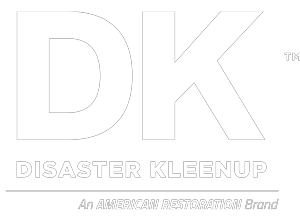Water damage can strike unexpectedly, whether from a burst pipe, roof leak, or flooding. Quick action is the key to preventing mold growth and avoiding costly repairs. When moisture lingers, mold can start developing within 24 to 48 hours, leading to structural damage and health risks. Understanding the importance of immediate water damage restoration and effective mold prevention strategies can help protect your property and ensure a safe living environment.
Why Quick Action Matters in Mold Prevention
Mold thrives in damp, humid environments, making water-damaged areas the perfect breeding ground. If moisture isn’t properly removed, mold spores can settle and develop rapidly. This can compromise indoor air quality and pose serious health risks, especially for individuals with respiratory conditions, allergies, or weakened immune systems.
Taking swift action after water damage helps:
- Prevent mold spores from colonizing.
- Reduce the need for extensive mold remediation.
- Minimize property damage and costly repairs.
- Protect the health of your family or employees.
By acting fast, you can significantly lower the risk of mold infestation and preserve your property’s structural integrity.
Immediate Steps to Take After Water Damage
To prevent mold from taking hold, follow these essential steps as soon as water damage occurs:
Stop the Source of Water Intrusion
If possible, locate and stop the source of water damage immediately. Whether it’s shutting off the main water supply for a burst pipe or fixing a roof leak, addressing the root cause prevents further damage.
Remove Standing Water Quickly
The longer water sits, the more damage it causes. Use pumps, wet vacuums, or towels to remove standing water. For severe flooding, professional water extraction services ensure thorough removal and prevent moisture from seeping into walls and flooring.
Dry and Dehumidify Affected Areas
Once standing water is removed, drying the area is crucial. Open windows and doors for ventilation, use fans to circulate air, and run dehumidifiers to reduce moisture levels. A moisture meter can help ensure surfaces are completely dry before repairs begin.
Note: Never use equipment to circulate the air if mold spores are present.
Remove and Inspect Water-Damaged Materials
Certain materials, like carpet, drywall, and insulation, can trap moisture and promote mold growth. Remove and discard items that cannot be fully dried. Upholstered furniture, rugs, and fabrics should be cleaned and dried promptly.
Clean and Disinfect Surfaces
Even if mold isn’t visible, disinfecting affected surfaces is essential. Use antimicrobial treatments or professional-grade cleaners to eliminate potential mold spores and bacteria. This step is especially important in kitchens, bathrooms, and basements where humidity levels tend to be higher.
Monitor for Signs of Mold Growth
Even after drying and cleaning, mold can still develop. Keep an eye out for musty odors, discoloration, or fuzzy patches on walls, ceilings, or flooring. If you suspect mold growth, contact a professional mold remediation service immediately.
Professional Water Damage Restoration and Mold Prevention
While DIY cleanup may seem sufficient, professional restoration services provide a higher level of protection against mold. Experts use industrial-grade equipment, such as high-powered air movers, HEPA vacuums, and dehumidifiers, to ensure complete moisture removal. They also conduct thorough inspections to detect hidden moisture pockets that could lead to future mold problems.
At Disaster Kleenup, we specialize in fast, effective water damage restoration and mold prevention. Our certified team responds 24/7 to emergencies, using advanced drying techniques to mitigate damage and restore your home or business.
How to Reduce Future Mold Risks
Beyond immediate cleanup, taking preventive measures can help safeguard your property from mold growth in the future:
- Regularly inspect plumbing for leaks or weak pipes.
- Maintain gutters and drainage systems to prevent water buildup.
- Improve ventilation in moisture-prone areas like bathrooms and basements.
- Use mold-resistant materials when remodeling or repairing damaged areas.
By staying proactive, you can reduce the likelihood of water damage and mold issues in the long run.
Final Thoughts
Quick action is essential in preventing mold after water damage. The faster you remove moisture and dry affected areas, the lower the risk of mold infestation and structural deterioration. By following immediate cleanup steps and seeking professional water damage restoration, you can protect your property and health. If you experience water damage, don’t wait—contact Disaster Kleenup for expert restoration and mold prevention services today.
